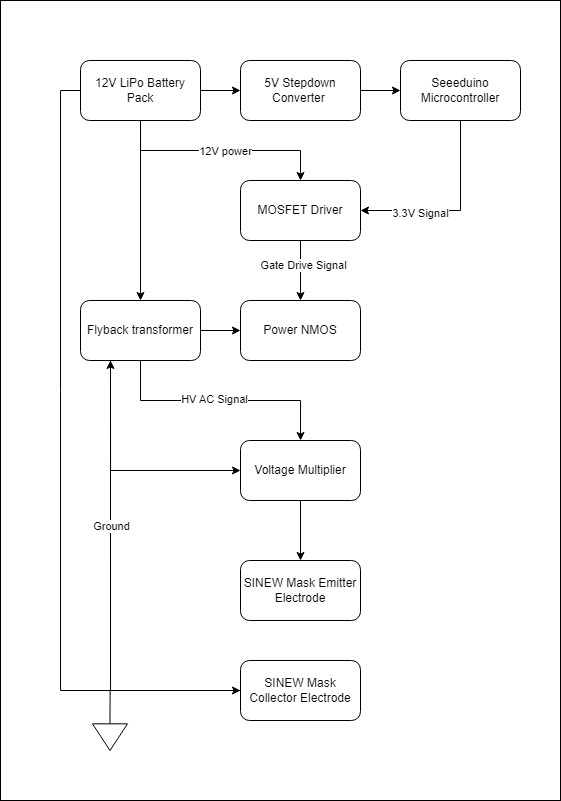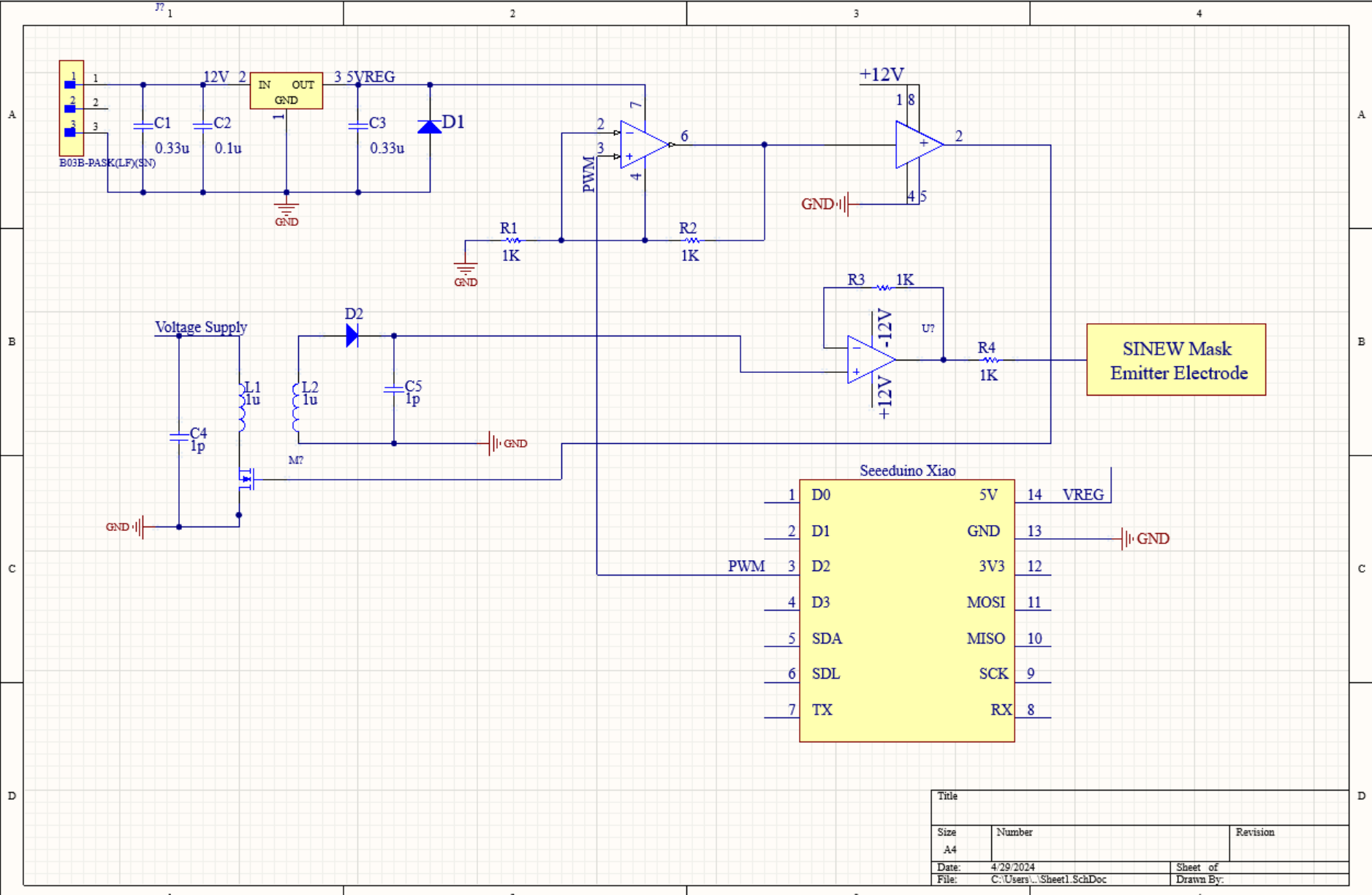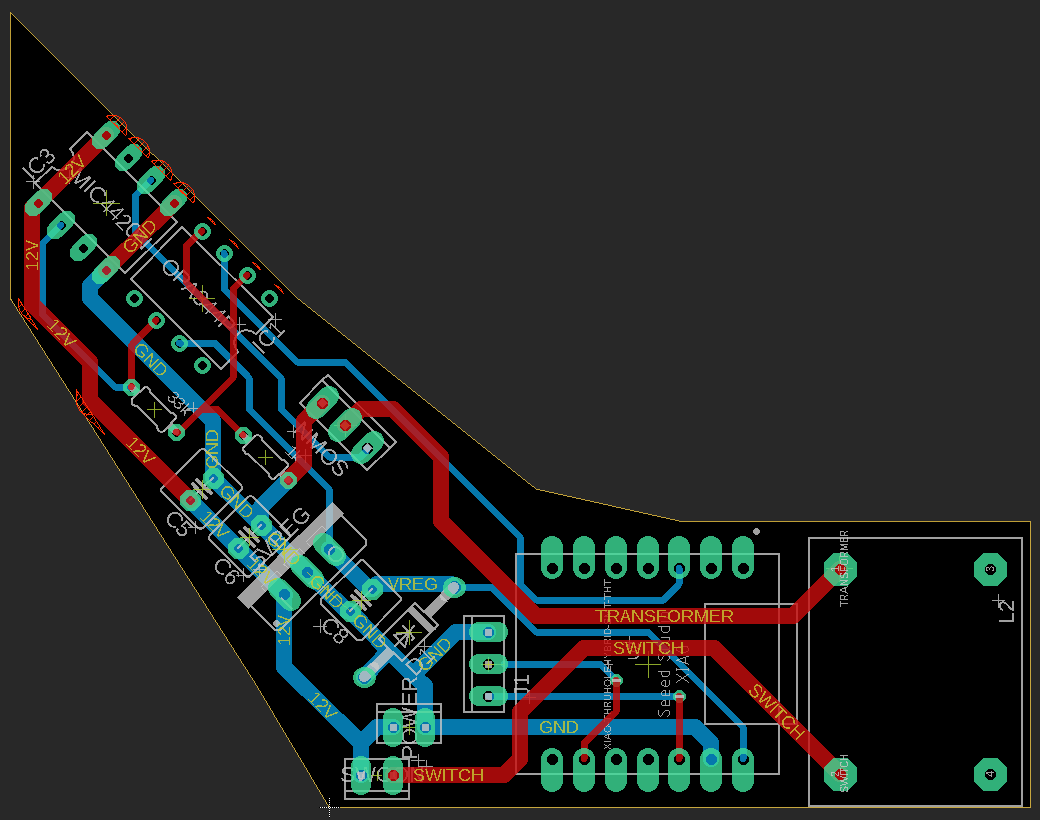1. Introduction
ELECTROSTATIC PRECIPITATORS (ESPs) are devices that use electric fields to capture particles from gas streams. They help to clean the air and protect people's health by removing pollutants such as dust, smoke, pollen, bacteria, and viruses. Many industries, such as power generation, cement production, metallurgy, and oil refining use ESPs to comply with environmental standards. For instance, ESPs are vital for trapping fine ash particles in coal-fired power plants.
ESPs are based on electrohydrodynamic; charging suspended particles in a gas using corona discharge and collecting them through induced Coulombic forces. ESPs typically consist of a 'discharge' electrode and an oppositely charged 'collecting' electrode, separated by a space where air can flow. When a direct current high voltage (HVDC) potential is applied, a strong electric field is produced around the discharge electrode, ionizing the air around it. These ions attach themselves to aerosols and particles suspended in the gas, attracting them to the oppositely charged collecting electrode. The particles form a solid layer on the collecting electrode, eventually requiring rapping or cleaning the electrode and removing the filtered particles from the ESP. ESPs can operate at efficiencies >99% and effectively collect sub micrometer (diameter <1 μm) particles.
The current main limitation of ESPs is their size. As the size of ESPs decreases, numerous new potential applications will become feasible. Already, ESPs have also been developed into portable and miniature versions. Portable ESPs are handy for local air purification, where large-scale systems are not practical. Furthermore, miniature ESPs are gaining interest for personal air purifiers and other applications, which offer individual scale solutions to deal with individual exposure to pollutants in localized settings. Some examples of applications of miniaturized ESP technology are already commercialized are:
- A portable electronic air cleaner, called Smog-Hog PCN, manufactured by Parker Hannifin Corporation. This device can eliminate particulate matter as it is generated at the source, such as welding, grinding, or cutting operations. It has a unit-mounted hood that captures the contaminant and conveys it to the precipitator, where it is collected and disposed of [1].
- A portable air purifier, called BAPUV350, produced by Black+Decker. This device uses a four-stage filtration process that includes a pre-filter, an electrostatic precipitator, an ozone filter, and a HEPA-activated carbon combo filter. It can remove up to 99.98% of pollutants, pet dander, gaseous pollutants, dust mites, viruses, bacteria, and pollen as small as 0.30 microns in large rooms up to 500 square feet [2].
Portable or miniature ESPs have significant advantages over other types of air purifiers, such as HEPA filters or ionizers. They can handle large volumes of gas at high temperatures, have low operating costs, and have high collection efficiencies.
Other applications that could use ESP technology are solar panel cleaning, indoor filters, and promisingly, face masks. Given the challenges observed with N-95 masks during the COVID-19 pandemic, there is motivation for the development of face mask technology based on ESPs due to their potential advantages in comfort, environmental impact/reusability, and filtration efficiency [3]. Promising results have already been shown in this field, and ESP masks could potentially replace single use masks as the standard [4].
All devices that use the Dielectric Barrier Discharge (DBD) principle require high-voltage excitation. Under atmospheric conditions, DBD electrodes often exhibit micro-discharge events that can lead to flashovers, potentially causing significant damage to electrical circuits. Consequently, dedicated power supplies must deliver high voltage and high-frequency waveforms to manage these non-linear and time-dependent loads. It is essential to monitor electrical parameters in real time and adjust them swiftly to prevent flashover. Using a microcontroller to adjust the output voltage effectively controls these parameters, and several examples of this approach are discussed below.
An ArduinoDUE microcontroller (MCU) can be used to control power input parameters and evaluate the amount of high voltage. It can sample the output voltage and select the best output frequency. Although this method will produce a delay and cause the signal to be out of phase, the average power standard deviation of the measurement is less than 4%, which proves its feasibility [1].
In addition, an STM microcontroller is used to control the output. The variable AC voltage is used as the system's input voltage. The diode bridge rectifier circuit converts the AC voltage to the optional DC voltage of 0-300V. The DC voltage is converted to the high voltage on the output side through the inverter topology and boost transformer. STM single-chip microcomputer is used for online regulation, overvoltage protection, overcurrent protection, soft start, and PWM advance programming. The cost of this method is low, and the efficiency reaches 87.45% [2].
2. Project Requirements
In exploring the topic of commercializing small-scale ESP equipment, the authors worked for the Sensors, Energy, and Automation Laboratory (SEAL) at the University of Washington to provide a solution for powering their Smart, Individualized, Noncontact, Extended-Wear (SINEW) Mask. The SINEW Mask in its current form is an electrostatic precipitator consisting of an 18 gauge copper wire as a collection electrode, and a copper sheet with sawtooth cutouts at its edges acting as the discharge electrode.
The requirements given to us by the SEAL SINEW Mask team were to design a compact DC-DC converter powered by a relatively low voltage battery which could supply upwards of 10kV of negatively biased potential at a current of roughly 10mA as the power draw determined in their prior testing using a Glassman PS/WG-wp-15-m3 high voltage power supply. Based on the unique power draw requirement of this device, a search of compatible power supplies was conducted to find an affordable, compact, and relatively powerful high voltage source for the SINEW Mask. The most relevant results are shown in Table 1.
Table 1. Applicable high voltage power supplies
Name | Max Voltage (kV) | Max Current (mA) | Dimensions(in mm) | Input Voltage (Volts DC) |
XP Power F-Series DC-HVDC Converter, F101R [3] | 10 | 1 | 71.1 x 43.2 x 21.6 | 0-15 |
High Voltage Products 10A24-N15 [e][4] | 10 | 1.5 | 94.6 x 38.7 x 24.5 | 24 |
Micromechatronics 10kV DC-DC Piezoelectric Converter[5] | 10 | .5 | 150 x 35 |
As can be seen, there are a variety of commercially available high voltage DC-DC converters. However, purchasing requires queries, and none of the dimensions would be ideal for the geometry desired by the SINEW team. The XP-Power series supply is too wide, while the 10A24-N15's required voltage is too high to be supplied by a conventional Li-Po battery.
3. Power supply selection
Small HVDC power supplies are generally either operated via piezoelectric or flyback mechanisms. Piezoelectric HVDC power supplies have the advantage of not generating significant magnetic fields in comparison to conventional ferrite core transformers, and are also generally lower profile [5], but generally are more expensive, and are not able to supply as great a current as flybacks.
The design of high voltage DC converters outside of Piezoelectric are based on the principle of generating AC signals that are then usually stepped up by a transformer, and then multiplied, making the discussion of AC-AC step up converters pertinent. Driving power supplies involves the consideration of several key factors, such as voltage levels, power ratings, efficiency, stability, and safety.
The resonant converter is a popular design topology for high voltage power supplies [6, 7]. Resonant converters operate at resonance by utilizing inductors and capacitors to achieve high efficiency and reduced electromagnetic interference, allowing for high power densities at a small size due to zero-voltage switching (ZVS) or zero-current switching (ZCS), whereby power is ideally zero during switching [8]. The drawbacks of this design, however, are the complexity of the design, and the specificity of each supply to its load, as the power supply's operating characteristics and resonant tank are designed around the actuator [6].
The other high voltage topology on which this power supply is based is hard switching: wherein the transformer is voltage or current controlled by the external switching of a power transistor. One such ubiquitous hard-switching design is the flyback topology, which generates high voltages on the primary side of a transformer with a high turn ratio through inductive kickback. This simple switching method which we have chosen has been used on its own and with other power conversion methods and modifications to drive DBD plasmas [9-12]. Hard switching, however, is less efficient and noisier than soft switching [8]. Nevertheless, the core topology is simpler and requires fewer parts than any other isolated power conversion method [13].
A limitation of the flyback topology in addition to strain on components and efficiency, is the power of the supply itself, as all energy released must be stored in the transformer wherein saturation and heat are serious concerns when trying to reach maximum power output with minimal space. This means that achieving clean sinusoidal high voltage is difficult due to the low inductance of the transformer.
During the design of the power supply, component size was the primary consideration. It was found that ignition pulse transformers used in lighters and stun-gun applications were plentiful and cost-effective solutions for a high turn ratio LF transformer which is highly suited for this application. The selected transformer is a generic single-pole flyback transformer, which has a turn ratio of 100:1 and rated for a 20kV output. Transformer selection is the most critical factor in the design of a power supply, as its characteristics in combination with the load determine the optimal operating parameters of the power supply.
Secondary to the transformer, the MOSFETs used for switching are a most critical component, as they control and the brunt of the power which goes through the system. One limiting feature of MOSFETs in this application is the thermal performance of the device, as in a compact design there is little space for active cooling or large heat sinks. Thus, the IRFZ44N MOSFET was chosen due to its low R(DS)on value of 0.032 ohms, further aided by the paralleled layout. Switching losses were negligible due to the low capacitance and frequency of the system.
The final consideration is the oscillator section, for which the Seeeduino Xiao is chosen. With a mass of only 4 grams and space of 21 x 17.5 x 3.5mm, it is the most compact microcontroller with the computing frequency needed to control a full featured and adjustable control system which allows for easy and continuous adjustment of every aspect of the oscillator at frequencies required.
Lastly, the rectification and multiplication of high voltage AC power to HVDC power was done using a custom 6 stage Cockroft Walton voltage multiplier potted in an enclosure designed to fit to the SINEW mask.
The block diagram of the high-voltage power supply (HVPS) is displayed in Figure 1. As miniaturization is the design's main concern, it operates with a simple flyback geometry mentioned before. It's schematic and PCB layout can be seen in Figure 2 and Figure 3.

Figure 1. Simple HV flyback power supply functional diagram

Figure 2. Schematic of HV power supply

Figure 3. PCB Layout of HV power supply
4. Experimental Procedure
The experimental setup utilizes a cubic acrylic test chamber measuring approximately 40 cm on each side. Within this chamber, a model head serves as the platform for securing the test mask. To simulate the inhalation process of a human user, silicone tubing is routed from an external Temtop PMD311 particle counter through the posterior region of the head to the respiratory area of the face. A face shield with flat sawtooth shaped electrodes situated along its entire perimeter is utilized. The electrodes are affixed with a uniform 14 mm gap, with consistent spacing across the entirety of the face shield.
The variables manipulated across numerous experiments include the base frequency applied to the transformer, the duty cycle of the frequency, and the strength of the voltage multiplier. Following a series of tests, a 6x voltage multiplier was determined to be optimal, striking a balance between achieving sufficiently high voltage levels and minimizing voltage losses. To establish the base frequency and duty cycle parameters, we conducted an oscilloscope voltage analysis of our power supply, employing an AC high voltage probe across various duty cycles and a broad spectrum of frequencies. We selected a range from 15 kHz to 40 kHz at a 15% duty cycle, where the base frequency can be tuned during use via an external potentiometer dial. This range of frequencies was chosen for its flexibility, because the frequency fed to the flyback transformer directly controls the voltage output. With these parameters the power supply output ranges from 7.7 kV to 12.1 kV based on the potentiometer control.
5. Results & Discussion
5.1. Filtration results
Over many rigorous testing cycles of this experimental setup, we were able to achieve filtration efficiency above 90% at certain particle sizes. Figure 5 shows the filtration of the SINEW mask (labeled SINEW Mask) in the experimental setup compared to other types of commonly used masks. Table 2 shows the particle counter data from control and test experiments.

Figure 4. SINEW Mask with custom filter in comparison to other wearable filters.
Table 2. Filtration Efficiency Table for the SINEW Mask.
Particle Size (μm) | 0.3 | 0.5 | 0.7 | 1 | 2.5 | 5 | 10 |
Efficiency (%) | 89.53 | 89.33 | 89.01 | 89.14 | 91.34 | 91.56 | 91.14 |
Control | 13497 | 7980 | 3436 | 1495 | 397 | 234 | 79 |
Test Count | 1413 | 851 | 378 | 162 | 34 | 20 | 7 |
5.2. Electrical measurements:
The power supply designed was meant to match and exceed the requirements dictated to us by the SEAL team. While it is able to charge the ESP and filter particles effectively, the power consumption and electrical characteristics are important factors to note for future design considerations, and to understand it's long-term operational capability. Measurement of the battery drain during active use using a digital ammeer shows a power consumption of 2.1 Watts. With the 22.2 Watt-hour battery used; this implies an expected use time per charge of 10.6 Hours.
5.3. Ozone discussion:
Ozone is a powerful gas used for oxidation and sterilization purposes including water treatment, industrial waste management, oils, bleaching, and in the production of other chemicals[14]. It is also a natural by-product of the ionization of oxygen, and thus is generated by the SINEW mask during operation. The FDA requires ozone output of indoor medical device to be less than 0.05ppm, while OSHA and NIOSH have upper limits of 0.10 ppm[14, 15]. Exposure to ozone concentrations above these limits becomes dangerous to human health, causing headache, decrease in lung function, and respiratory diseases [15-17]. Therefore, it is crucial to minimize the production of ozone. Optimization of parameters of the ESP, including voltage, frequency, and power, can minimize the production of ozone in ESP.
An experiment was carried out to study the ozone generation of the SINEW mask. The experimental setup involved placing the mask on a model of a head and turning it on until the distinct smell of ozone was detectable. Subsequently, an air suction system was engaged to draw air from the region behind the electrodes of the mask at a flow rate of 2.83 L/min. The extracted air was then analyzed using the FORENSICS DETECTORS™ FD-90 ozone detector, revealing a concentration of less than 1 ppm of ozone generated by the mask. The exact concentration of ozone generated by the mask is an area for further investigation.
The underlying mechanism for the low ozone concentration is hypothesized to be related to the polar nature of ozone molecules. The strong electric field generated by the electrodes of the mask is believed to attract and attach ozone molecules to the electrodes, preventing their release into the surrounding air and, consequently, reducing inhalation risk for the wearer.
6. Conclusions
The miniature DC high voltage power supply designed for use in small-scale ESP systems, particularly for the SINEW mask, has demonstrated promising results. Despite the challenges of generating high voltage in small packages, the power supply successfully met the requirements set by the SEAL SINEW Mask team, providing upwards of 10kV of negatively biased potential at a current of roughly 10mA.
Utilizing a compact flyback topology, the power supply achieved acceptable efficiency and generated the necessary high voltages and power to drive ESP, even on non-optimized geometries. The experimental results showed filtration efficiency above 90% for certain particle sizes, showcasing the effectiveness of the SINEW mask as a custom filter. Additionally, electrical measurements indicated a power consumption of 2.1 Watts during active use, with an expected use time per charge of 10.6 hours, making it suitable for portable applications.
Overall, the development and evaluation of this miniature power supply represents a significant advancement in making ESP technology practical for smaller-scale applications. With further optimization and refinement, portable ESP systems like the SINEW mask could offer effective solutions for personal air purification and other localized pollutant removal.
During the high-voltage operation the flashover may occur. The flashover can cause substantial damage to electrical components and reduce the overall efficiency of the system.
To mitigate the risk of flashover and ensure the reliability of the high voltage power supply, a microcontroller was introduced in the design and real-time monitoring and control of the electrical parameters were achieved. The microcontroller samples the output voltage and current, adjusts the input parameters dynamically to prevent conditions that could lead to flashover. It ensures that the power supply runs in safe limits and maximizing efficiency while minimizing the risk of electrical breakdowns. This approach not only enhances the service life of the power supply but also improves the overall safety and performance of the ESP system.
Overall, in addition to considering the efficiency of the ESP system, its safety has also been considered. The introduction of the microcontroller reduces the likelihood of flashover, significantly enhancing the reliability and lifespan of the equipment.
References
[1]. "Smog-Hog Portable Electrostatic Precipitator Owner's Manual," ed, 2020.
[2]. Black+Decker, "14 in. Electrostatic Precipitator Air Purifier," BLACK+DECKER.
[3]. X. P. Power, "XP Power F Series DC-HVDC Converter," in COMPACT, I/O PROPORTIONAL HIGH VOLTAGE POWER SUPPLIES 10W, F SERIES.
[4]. H. V. Products, "A series - HVP: High voltage products gmbh," HVP High Voltage Products.
[5]. I. Micromechatronics, "High Voltage Piezoelectric DC-DC converters," Micromechatronics, Inc.
[6]. M. Amjad, Z. Salam, M. Facta, and S. Mekhilef, "Analysis and Implementation of Transformerless LCL Resonant Power Supply for Ozone Generation," IEEE Transactions on Power Electronics, vol. 28, no. 2, pp. 650–660, 2013/2 2013, doi: 10.1109/tpel.2012.2202130.
[7]. L. Chang, T. Guo, J. Liu, C. Zhang, Y. Deng, and X. He, "Analysis and Design of a Current-Source CLCC Resonant Converter for DBD Applications," IEEE Transactions on Power Electronics, vol. 29, no. 4, pp. 1610–1621, 2014/4 2014, doi: 10.1109/tpel.2013.2266376.
[8]. M. Forouzesh, Y. P. Siwakoti, S. A. Gorji, F. Blaabjerg, and B. Lehman, "Step-Up DC–DC Converters: A Comprehensive Review of Voltage-Boosting Techniques, Topologies, and Applications," IEEE Transactions on Power Electronics, vol. 32, no. 12, pp. 9143–9178, 2017/12 2017, doi: 10.1109/tpel.2017.2652318.
[9]. Y. C. Shin, B. Kim, and K. C. Ko, "Considerations on the DBD power supply for surface change of ozone reactor," presented at the 2010 IEEE International Power Modulator and High Voltage Conference, 2010/5, 2010. [Online]. Available: http://dx.doi.org/10.1109/IPMHVC.2010.5958450.
[10]. V. J. Law, V. Milosavljević, N. O'Connor, J. F. Lalor, and S. Daniels, "Handheld Flyback driven coaxial dielectric barrier discharge: Development and characterization," Review of Scientific Instruments, vol. 79, no. 9, p. 094707, 2008/9 2008, doi: 10.1063/1.2988833.
[11]. Z. Liu, W. Wang, H. Wei, and C. Liu, "A novel ZVS double switch flyback inverter and pulse controlled dimming methods for flat DBD lamp," IEEE Transactions on Consumer Electronics, vol. 57, no. 3, pp. 995–1002, 2011/8 2011, doi: 10.1109/tce.2011.6018847.
[12]. M. Meisser, R. Kling, and W. Heering, "Universal resonant topology for high frequency pulsed operation of Dielectric Barrier Discharge light sources," presented at the 2011 Twenty-Sixth Annual IEEE Applied Power Electronics Conference and Exposition (APEC), Mar, 2011, 2011. [Online]. Available: http://dx.doi.org/10.1109/APEC.2011.5744743.
[13]. "Switch Mode Power Supply Topologies: A Comparison."
[14]. U. S. E. P. Agency, "Ozone generators that are sold as air cleaners," ed, 2023.
[15]. C. Ghazaly, M. Guillemot, B. Castel, E. Langlois, M. Etienne, and M. Hebrant, "Real-Time Optical Ozone Sensor for Occupational Exposure Assessment," in 2019 20th International Conference on Solid-State Sensors, Actuators and Microsystems & Eurosensors XXXIII (TRANSDUCERS & EUROSENSORS XXXIII), 23-27 June 2019 2019, pp. 1403-1406, doi: 10.1109/TRANSDUCERS.2019.8808516.
[16]. E. Grignani et al., "Safe and effective use of ozone as air and surface disinfectant in the conjuncture of Covid-19," Gases, vol. 1, no. 1, pp. 19-32, 2020.
[17]. A. Singh, H. Joshi, A. Srivastava, R. Kumar, and N. Hasteer, "An Analysis of Polluted Air Consumption and Hazards on Human Health: A Study Towards System Design," in 2020 10th International Conference on Cloud Computing, Data Science & Engineering (Confluence), 29-31 Jan. 2020 2020, pp. 532-539, doi: 10.1109/Confluence47617.2020.9057848.
Cite this article
Tian,Y. (2024). Design of high voltage power supply for SINEW mask. Applied and Computational Engineering,101,63-70.
Data availability
The datasets used and/or analyzed during the current study will be available from the authors upon reasonable request.
Disclaimer/Publisher's Note
The statements, opinions and data contained in all publications are solely those of the individual author(s) and contributor(s) and not of EWA Publishing and/or the editor(s). EWA Publishing and/or the editor(s) disclaim responsibility for any injury to people or property resulting from any ideas, methods, instructions or products referred to in the content.
About volume
Volume title: Proceedings of the 2nd International Conference on Machine Learning and Automation
© 2024 by the author(s). Licensee EWA Publishing, Oxford, UK. This article is an open access article distributed under the terms and
conditions of the Creative Commons Attribution (CC BY) license. Authors who
publish this series agree to the following terms:
1. Authors retain copyright and grant the series right of first publication with the work simultaneously licensed under a Creative Commons
Attribution License that allows others to share the work with an acknowledgment of the work's authorship and initial publication in this
series.
2. Authors are able to enter into separate, additional contractual arrangements for the non-exclusive distribution of the series's published
version of the work (e.g., post it to an institutional repository or publish it in a book), with an acknowledgment of its initial
publication in this series.
3. Authors are permitted and encouraged to post their work online (e.g., in institutional repositories or on their website) prior to and
during the submission process, as it can lead to productive exchanges, as well as earlier and greater citation of published work (See
Open access policy for details).
References
[1]. "Smog-Hog Portable Electrostatic Precipitator Owner's Manual," ed, 2020.
[2]. Black+Decker, "14 in. Electrostatic Precipitator Air Purifier," BLACK+DECKER.
[3]. X. P. Power, "XP Power F Series DC-HVDC Converter," in COMPACT, I/O PROPORTIONAL HIGH VOLTAGE POWER SUPPLIES 10W, F SERIES.
[4]. H. V. Products, "A series - HVP: High voltage products gmbh," HVP High Voltage Products.
[5]. I. Micromechatronics, "High Voltage Piezoelectric DC-DC converters," Micromechatronics, Inc.
[6]. M. Amjad, Z. Salam, M. Facta, and S. Mekhilef, "Analysis and Implementation of Transformerless LCL Resonant Power Supply for Ozone Generation," IEEE Transactions on Power Electronics, vol. 28, no. 2, pp. 650–660, 2013/2 2013, doi: 10.1109/tpel.2012.2202130.
[7]. L. Chang, T. Guo, J. Liu, C. Zhang, Y. Deng, and X. He, "Analysis and Design of a Current-Source CLCC Resonant Converter for DBD Applications," IEEE Transactions on Power Electronics, vol. 29, no. 4, pp. 1610–1621, 2014/4 2014, doi: 10.1109/tpel.2013.2266376.
[8]. M. Forouzesh, Y. P. Siwakoti, S. A. Gorji, F. Blaabjerg, and B. Lehman, "Step-Up DC–DC Converters: A Comprehensive Review of Voltage-Boosting Techniques, Topologies, and Applications," IEEE Transactions on Power Electronics, vol. 32, no. 12, pp. 9143–9178, 2017/12 2017, doi: 10.1109/tpel.2017.2652318.
[9]. Y. C. Shin, B. Kim, and K. C. Ko, "Considerations on the DBD power supply for surface change of ozone reactor," presented at the 2010 IEEE International Power Modulator and High Voltage Conference, 2010/5, 2010. [Online]. Available: http://dx.doi.org/10.1109/IPMHVC.2010.5958450.
[10]. V. J. Law, V. Milosavljević, N. O'Connor, J. F. Lalor, and S. Daniels, "Handheld Flyback driven coaxial dielectric barrier discharge: Development and characterization," Review of Scientific Instruments, vol. 79, no. 9, p. 094707, 2008/9 2008, doi: 10.1063/1.2988833.
[11]. Z. Liu, W. Wang, H. Wei, and C. Liu, "A novel ZVS double switch flyback inverter and pulse controlled dimming methods for flat DBD lamp," IEEE Transactions on Consumer Electronics, vol. 57, no. 3, pp. 995–1002, 2011/8 2011, doi: 10.1109/tce.2011.6018847.
[12]. M. Meisser, R. Kling, and W. Heering, "Universal resonant topology for high frequency pulsed operation of Dielectric Barrier Discharge light sources," presented at the 2011 Twenty-Sixth Annual IEEE Applied Power Electronics Conference and Exposition (APEC), Mar, 2011, 2011. [Online]. Available: http://dx.doi.org/10.1109/APEC.2011.5744743.
[13]. "Switch Mode Power Supply Topologies: A Comparison."
[14]. U. S. E. P. Agency, "Ozone generators that are sold as air cleaners," ed, 2023.
[15]. C. Ghazaly, M. Guillemot, B. Castel, E. Langlois, M. Etienne, and M. Hebrant, "Real-Time Optical Ozone Sensor for Occupational Exposure Assessment," in 2019 20th International Conference on Solid-State Sensors, Actuators and Microsystems & Eurosensors XXXIII (TRANSDUCERS & EUROSENSORS XXXIII), 23-27 June 2019 2019, pp. 1403-1406, doi: 10.1109/TRANSDUCERS.2019.8808516.
[16]. E. Grignani et al., "Safe and effective use of ozone as air and surface disinfectant in the conjuncture of Covid-19," Gases, vol. 1, no. 1, pp. 19-32, 2020.
[17]. A. Singh, H. Joshi, A. Srivastava, R. Kumar, and N. Hasteer, "An Analysis of Polluted Air Consumption and Hazards on Human Health: A Study Towards System Design," in 2020 10th International Conference on Cloud Computing, Data Science & Engineering (Confluence), 29-31 Jan. 2020 2020, pp. 532-539, doi: 10.1109/Confluence47617.2020.9057848.









